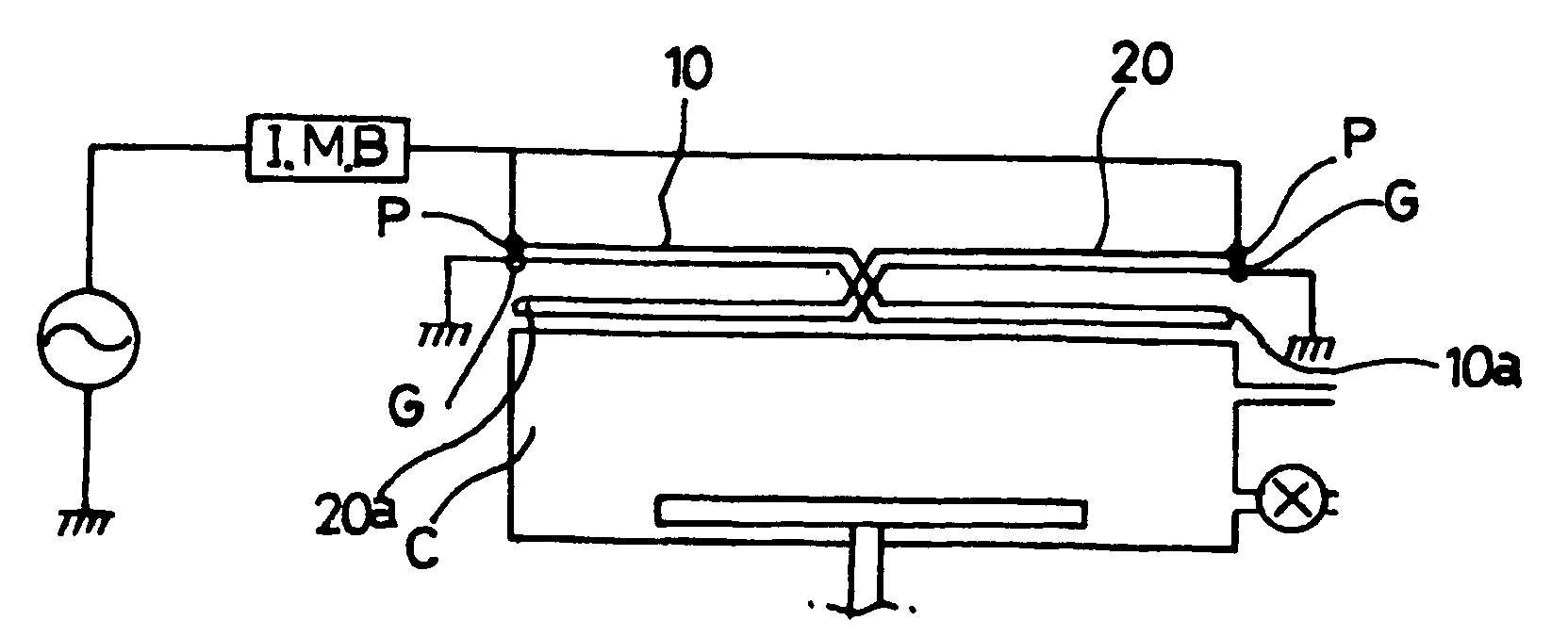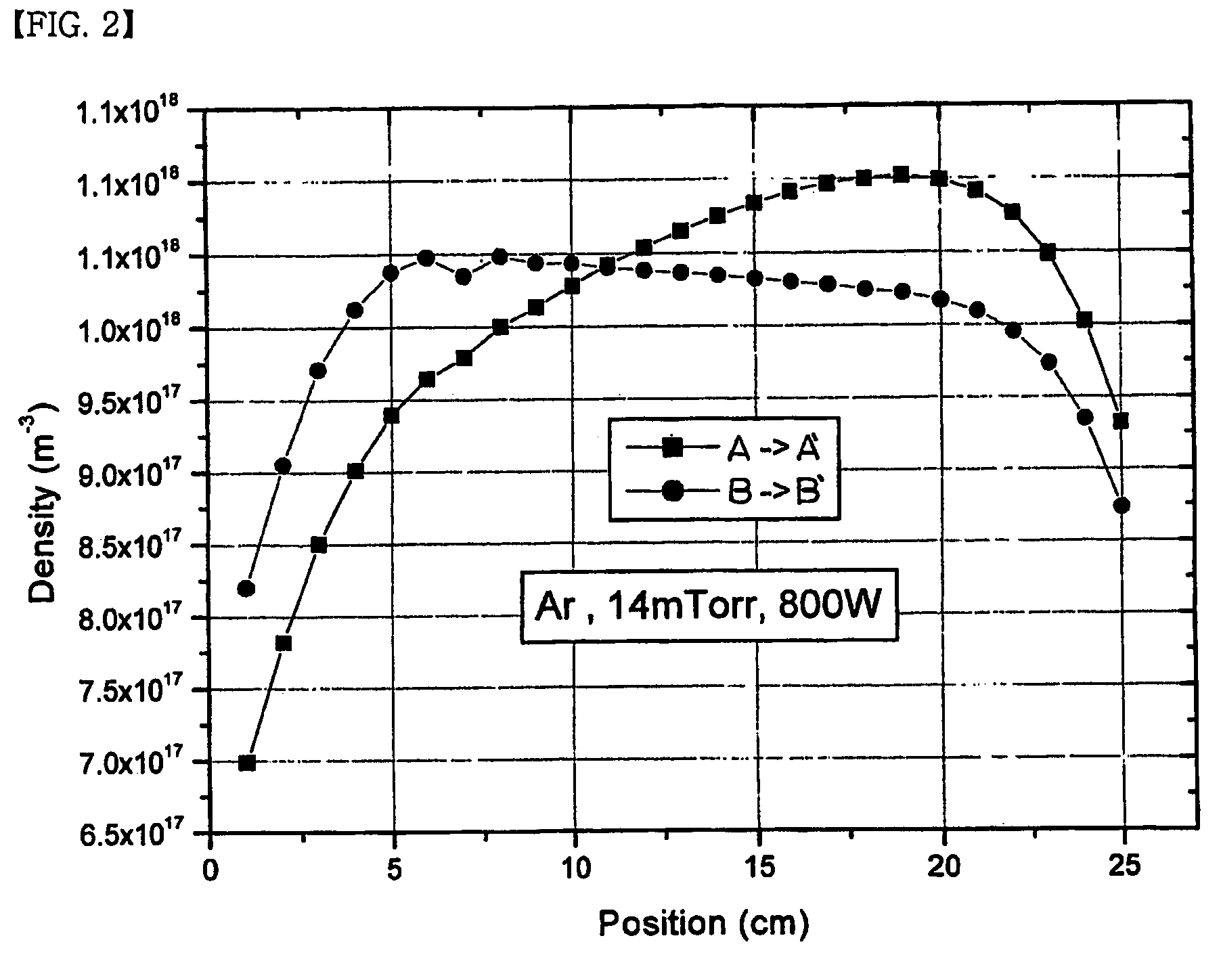Antenna structure for inductively coupled plasma generator
an inductively coupled plasma and generator technology, applied in nuclear reactors, greenhouse gas reduction, nuclear engineering, etc., can solve the problems of difficult control of the distribution of inductive electric fields, complex and difficult application of oxide etching process, loss of ions and electrons at the internal wall of the chamber, etc., to facilitate inductance matching, improve plasma uniformity, and effectively reduce an electrical field
- Summary
- Abstract
- Description
- Claims
- Application Information
AI Technical Summary
Benefits of technology
Problems solved by technology
Method used
Image
Examples
first embodiment
[0042]FIG. 7 is a perspective view of an antenna structure according to still another embodiment of the present invention, and FIG. 8 is a cross-sectional view of an inductively coupled plasma generator with the antenna structure shown in FIG. 7. The antenna structure according to this embodiment is installed in a cylindrical chamber, in which two antennas 10 and 20 coplanarly cross each other to be disposed at the interior and exterior, respectively, and the circuit thereof is the same as that of the present invention.
second embodiment
[0043]FIG. 9 is a perspective view of an antenna structure according to still another embodiment of the present invention, which is installed in a cylindrical chamber as shown in FIG. 8. Three antennas 10, 20 and 30 cross each other in three plies along the perimeters of three coplanar concentric circles, that is, the outermost circle 10, 20, 30, the intermediate circle 10b, 20b, 30b, and the innermost circle 10a, 20a, 30a, and have the same circuitry as those of the
[0044]FIG. 10 is a diagram showing the installation state of the antenna structure according to still another embodiment of the present invention. In this embodiment, parallel antennas A and B (or antennas shown in FIG. 3 or 6) installed across at the outer and inner parts of a flat dielectric member disposed above a chamber (not shown) are electrically connected to each other in parallel. In order to fabricate a large-diameter semiconductor, parallel antennas are concentrically arranged in two or three plies to make pla...
PUM
| Property | Measurement | Unit |
|---|---|---|
| size | aaaaa | aaaaa |
| frequency | aaaaa | aaaaa |
| area | aaaaa | aaaaa |
Abstract
Description
Claims
Application Information
 Login to View More
Login to View More - R&D
- Intellectual Property
- Life Sciences
- Materials
- Tech Scout
- Unparalleled Data Quality
- Higher Quality Content
- 60% Fewer Hallucinations
Browse by: Latest US Patents, China's latest patents, Technical Efficacy Thesaurus, Application Domain, Technology Topic, Popular Technical Reports.
© 2025 PatSnap. All rights reserved.Legal|Privacy policy|Modern Slavery Act Transparency Statement|Sitemap|About US| Contact US: help@patsnap.com



